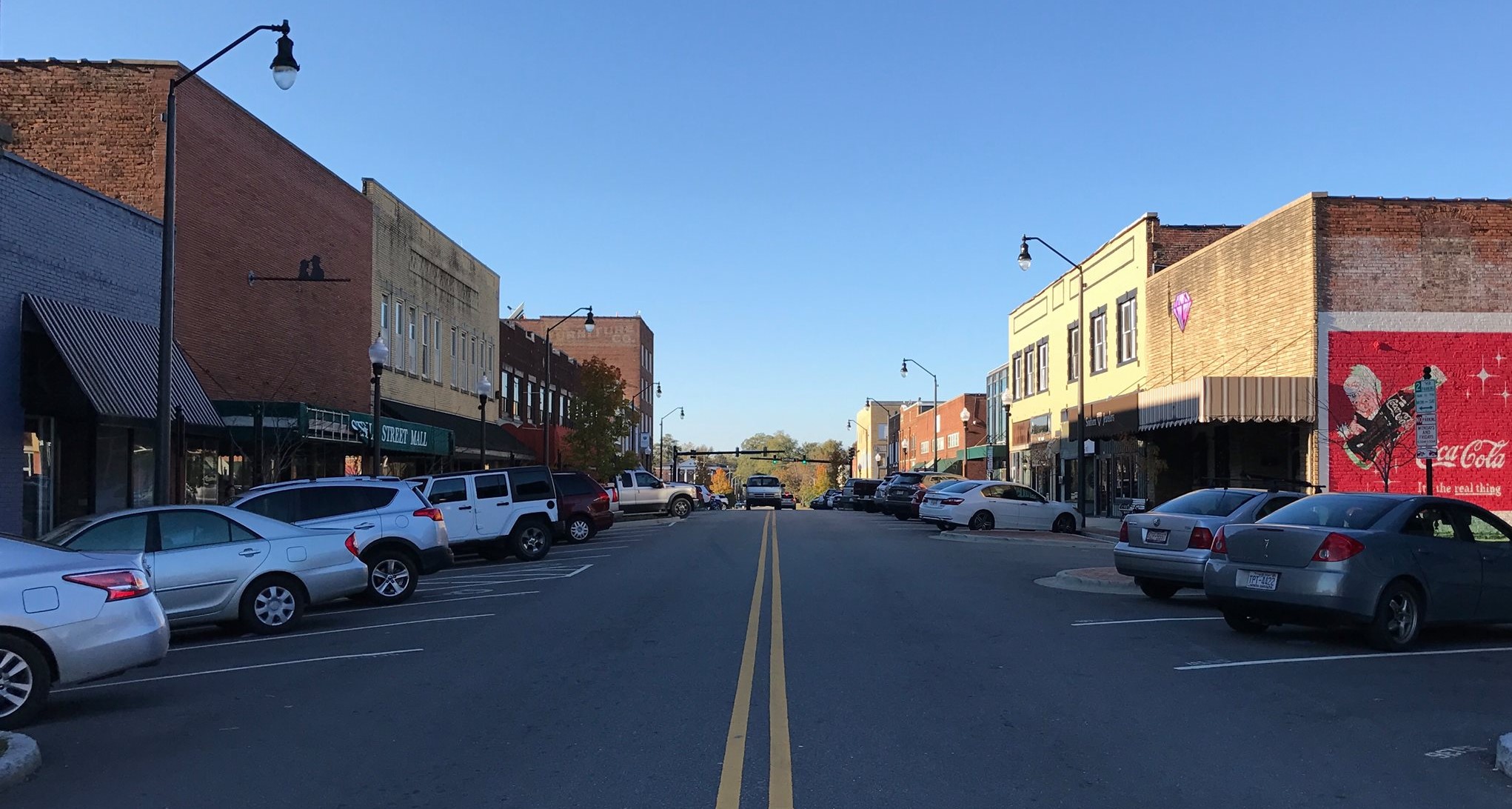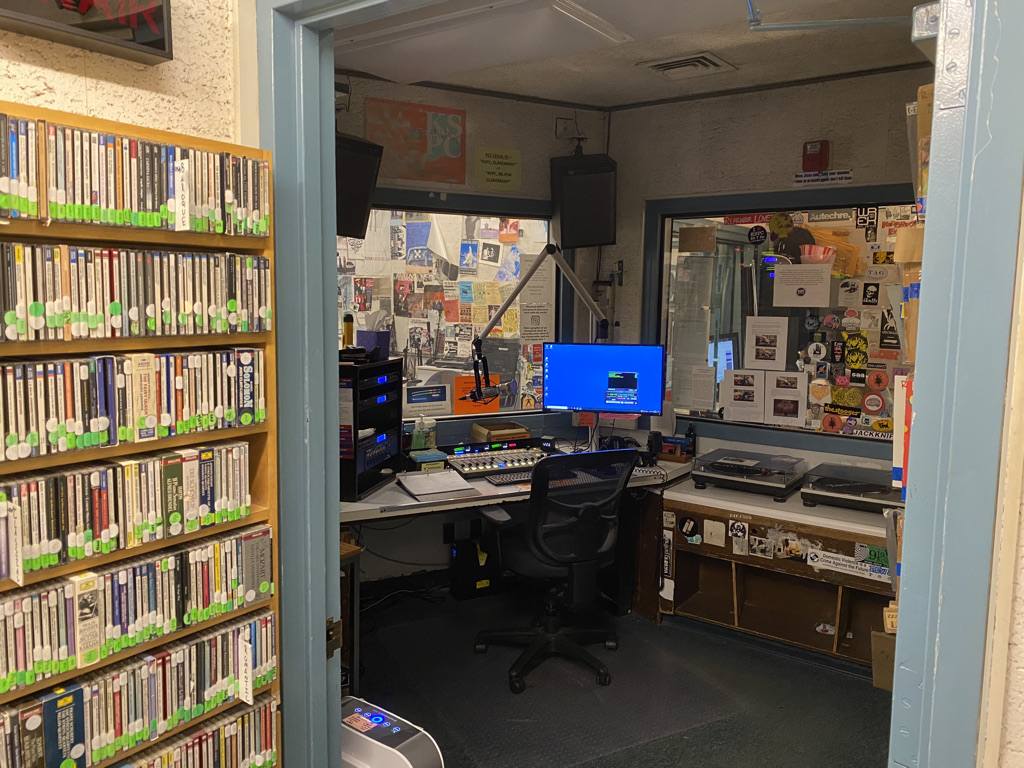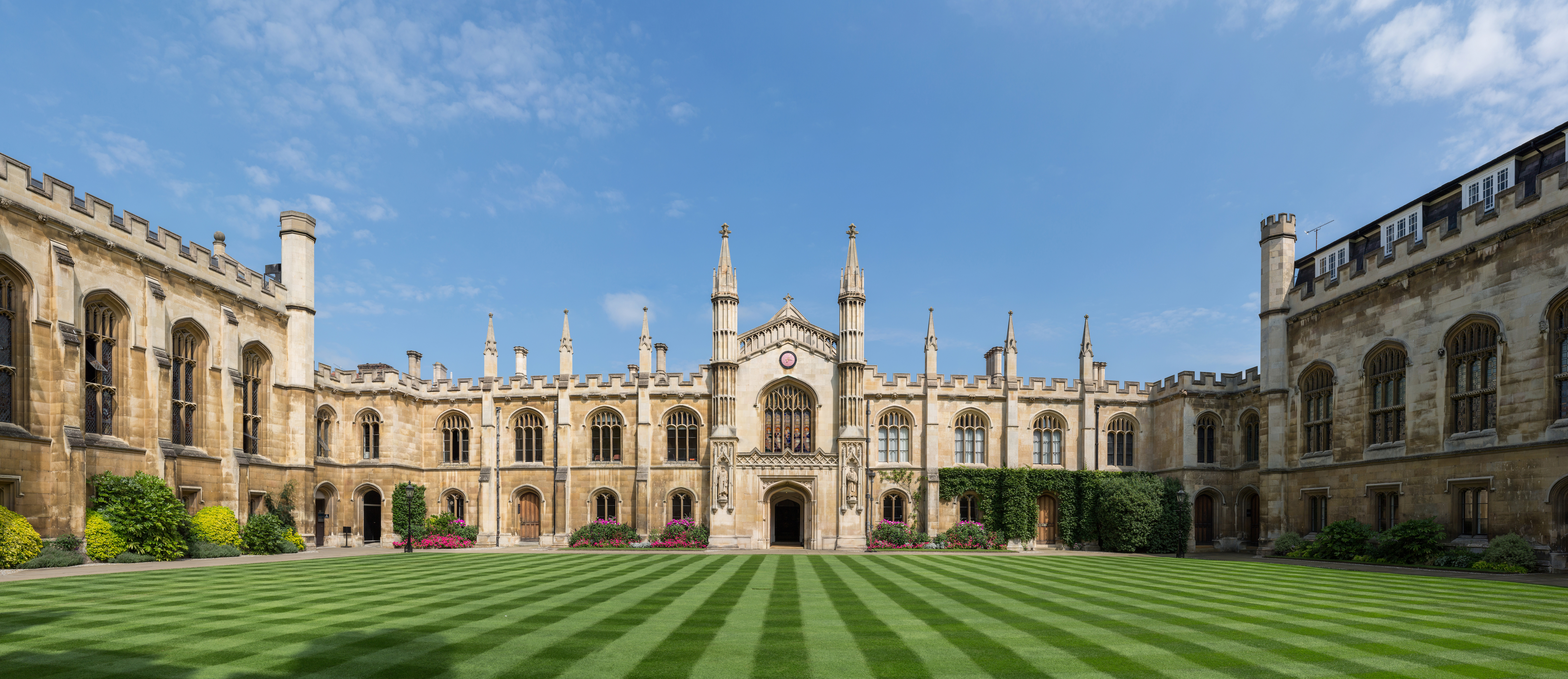|
WDCC (FM)
WDCC (90.5 FM broadcasting, FM) is a college radio station broadcasting a rhythmic contemporary hit radio format. Licensed to Sanford, North Carolina, United States, the station serves the Sanford area. The station is owned by Central Carolina Community College. History WDCC is a noncommercial, student-run station. WDCC originally signed on the air in December 1970 at 89.5 MHz and an Effective Radiated Power (ERP) of 35.2 watts. The call letters stand for "We're Department of Community Colleges". The station began operating in conjunction with the Radio-TV Broadcasting Curriculum at Central Carolina Technical Institute, now known as Central Carolina Community College since 1988. The radio format was a combination of top 40 and country music, since it was an instructional facility to teach students to be professional announcers and be skilled at playing a variety of radio formats and also to gather, write and produce newscasts. News was read via Associated Press Teletype at : ... [...More Info...] [...Related Items...] OR: [Wikipedia] [Google] [Baidu] |
Sanford, North Carolina
Sanford is a city in Lee County, North Carolina, United States. The population was 30,261 at the 2020 census. It is the county seat of Lee County. History Sanford was named for C.O. Sanford, a railroad civil engineer instrumental in the building of the rail lines through the area that formed the foundation of what became the city of Sanford. Sanford is located in Lee County, North Carolina, which was formed from parts of the surrounding three counties in 1907. On creation of the new county, Sanford and Jonesboro were the major towns in the area. Rather than decide which would be the county seat, the decision was to place the county's new courthouse directly between the two towns. For decades, Lee County was the only county in the United States to have a courthouse with an RFD address. In the late 20th century Sanford had grown to such an extent that it eventually merged with Jonesboro. The town of Jonesboro became Jonesboro Heights, and the name of Sanford was kept for the town. ... [...More Info...] [...Related Items...] OR: [Wikipedia] [Google] [Baidu] |
Rhythmic Contemporary Hit Radio
Rhythmic contemporary, also known as Rhythmic Top 40, Rhythmic CHR or rhythmic crossover, is a primarily American music-radio format that includes a mix of EDM, upbeat rhythmic pop, hip hop and upbeat R&B hits. Rhythmic contemporary never uses hard rock or country in its airplay, but it may occasionally use a reggae, Latin, reggaeton, or a urban contemporary gospel hit. Essentially, the format is a cross between mainstream radio and urban contemporary radio formats. Format history Although some top-40 stations such as CKLW in Windsor, Ontario, made their mark by integrating a large amount of R&B and soul product into their predominantly pop playlists as early as 1967, such stations were still considered mainstream top 40 (a cycle that continues to dominate the current Top 40/CHR chart). It was not until the disco era of the late 1970s that such stations came to be considered as a format of their own as opposed to top-40 or soul. This development was largely spurred by the highl ... [...More Info...] [...Related Items...] OR: [Wikipedia] [Google] [Baidu] |
Federal Communications Commission
The Federal Communications Commission (FCC) is an independent agency of the United States federal government that regulates communications by radio, television, wire, satellite, and cable across the United States. The FCC maintains jurisdiction over the areas of broadband access, fair competition, radio frequency use, media responsibility, public safety, and homeland security. The FCC was formed by the Communications Act of 1934 to replace the radio regulation functions of the Federal Radio Commission. The FCC took over wire communication regulation from the Interstate Commerce Commission. The FCC's mandated jurisdiction covers the 50 states, the District of Columbia, and the territories of the United States. The FCC also provides varied degrees of cooperation, oversight, and leadership for similar communications bodies in other countries of North America. The FCC is funded entirely by regulatory fees. It has an estimated fiscal-2022 budget of US $388 million. It h ... [...More Info...] [...Related Items...] OR: [Wikipedia] [Google] [Baidu] |
Central Carolina Community College
Central Carolina Community College is a public community college with campuses in Chatham, Harnett and Lee counties. It is part of the North Carolina Community College System. It offered its first classes in 1961. Academics Central Carolina Community College offers Associate in Arts, Associate in Science, and Associate in Applied Science degrees. Many students take their first two years of college at Central Carolina, then transfer to a four-year institution. One-year, or shorter, vocational and academic programs lead to a diploma or certificate. The college also offers non-curriculum credit courses in Adult Basic Education and other adult education courses in technical, vocational, academic, and general interest areas. The college's vocational training programs provide nurses, early childhood teachers, police officers, bioprocessing technicians, and many other essential skilled workers. In partnership with Lee County Public Schools, the college is home to Lee Early College. In the ... [...More Info...] [...Related Items...] OR: [Wikipedia] [Google] [Baidu] |
FM Broadcasting
FM broadcasting is a method of radio broadcasting using frequency modulation (FM). Invented in 1933 by American engineer Edwin Armstrong, wide-band FM is used worldwide to provide high fidelity sound over broadcast radio. FM broadcasting is capable of higher fidelity—that is, more accurate reproduction of the original program sound—than other broadcasting technologies, such as AM broadcasting. It is also less susceptible to common forms of interference, reducing static and popping sounds often heard on AM. Therefore, FM is used for most broadcasts of music or general audio (in the audio spectrum). FM radio stations use the very high frequency range of radio frequencies. Broadcast bands Throughout the world, the FM broadcast band falls within the VHF part of the radio spectrum. Usually 87.5 to 108.0 MHz is used, or some portion thereof, with few exceptions: * In the former Soviet republics, and some former Eastern Bloc countries, the older 65.8–74 M ... [...More Info...] [...Related Items...] OR: [Wikipedia] [Google] [Baidu] |
College Radio
Campus radio (also known as college radio, university radio or student radio) is a type of radio station that is run by the students of a college, university or other educational institution. Programming may be exclusively created or produced by students, or may include program contributions from the local community in which the radio station is based. Sometimes campus radio stations are operated for the purpose of training professional radio personnel, sometimes with the aim of broadcasting educational programming, while other radio stations exist to provide alternative to commercial broadcasting or government broadcasters. Campus radio stations are generally licensed and regulated by national governments, and have very different characteristics from one country to the next. One commonality between many radio stations regardless of their physical location is a willingness—or, in some countries, even a licensing requirement—to broadcast musical selections that are not cat ... [...More Info...] [...Related Items...] OR: [Wikipedia] [Google] [Baidu] |
Rhythmic Contemporary Hit Radio
Rhythmic contemporary, also known as Rhythmic Top 40, Rhythmic CHR or rhythmic crossover, is a primarily American music-radio format that includes a mix of EDM, upbeat rhythmic pop, hip hop and upbeat R&B hits. Rhythmic contemporary never uses hard rock or country in its airplay, but it may occasionally use a reggae, Latin, reggaeton, or a urban contemporary gospel hit. Essentially, the format is a cross between mainstream radio and urban contemporary radio formats. Format history Although some top-40 stations such as CKLW in Windsor, Ontario, made their mark by integrating a large amount of R&B and soul product into their predominantly pop playlists as early as 1967, such stations were still considered mainstream top 40 (a cycle that continues to dominate the current Top 40/CHR chart). It was not until the disco era of the late 1970s that such stations came to be considered as a format of their own as opposed to top-40 or soul. This development was largely spurred by the highl ... [...More Info...] [...Related Items...] OR: [Wikipedia] [Google] [Baidu] |
Radio Format
A radio format or programming format (not to be confused with broadcast programming) describes the overall content broadcast on a radio station. The radio format emerged mainly in the United States in the 1950s, at a time when radio was compelled to develop new and exclusive ways to programming by competition with television. The formula has since spread as a reference for commercial radio programming worldwide. A radio format aims to reach a more or less specific audience according to a certain type of programming, which can be thematic or general, more informative or more musical, among other possibilities. Radio formats are often used as a marketing tool and are subject to frequent changes. Except for talk radio or sports radio formats, most programming formats are based on commercial music. However the term also includes the news, bulletins, DJ talk, jingles, commercials, competitions, traffic news, sports, weather and community announcements between the tracks. Backgroun ... [...More Info...] [...Related Items...] OR: [Wikipedia] [Google] [Baidu] |
1970 Establishments In North Carolina
Year 197 ( CXCVII) was a common year starting on Saturday (link will display the full calendar) of the Julian calendar. At the time, it was known as the Year of the Consulship of Magius and Rufinus (or, less frequently, year 950 ''Ab urbe condita''). The denomination 197 for this year has been used since the early medieval period, when the Anno Domini calendar era became the prevalent method in Europe for naming years. Events By place Roman Empire * February 19 – Battle of Lugdunum: Emperor Septimius Severus defeats the self-proclaimed emperor Clodius Albinus at Lugdunum (modern Lyon). Albinus commits suicide; legionaries sack the town. * Septimius Severus returns to Rome and has about 30 of Albinus's supporters in the Senate executed. After his victory he declares himself the adopted son of the late Marcus Aurelius. * Septimius Severus forms new naval units, manning all the triremes in Italy with heavily armed troops for war in the East. His soldiers embark on ... [...More Info...] [...Related Items...] OR: [Wikipedia] [Google] [Baidu] |
College Radio Stations In North Carolina
A college (Latin: ''collegium'') is an educational institution or a constituent part of one. A college may be a degree-awarding tertiary educational institution, a part of a collegiate or federal university, an institution offering vocational education, or a secondary school. In most of the world, a college may be a high school or secondary school, a college of further education, a training institution that awards trade qualifications, a higher-education provider that does not have university status (often without its own degree-awarding powers), or a constituent part of a university. In the United States, a college may offer undergraduate programs – either as an independent institution or as the undergraduate program of a university – or it may be a residential college of a university or a community college, referring to (primarily public) higher education institutions that aim to provide affordable and accessible education, usually limited to two-year asso ... [...More Info...] [...Related Items...] OR: [Wikipedia] [Google] [Baidu] |




